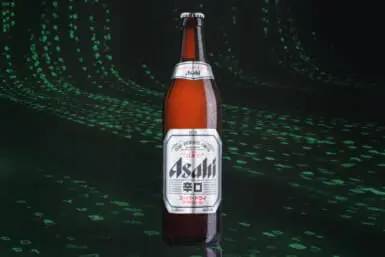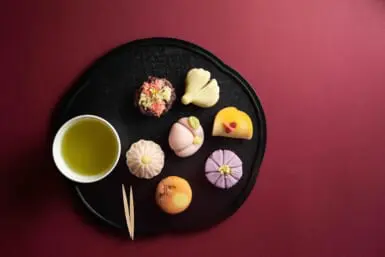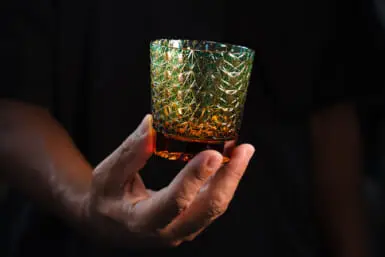There is something about the first chilly days of autumn that evoke fond memories of our childhoods. Those who grew up in Japan can vividly recall walking home hand-in-hand with our moms on a particularly cold afternoon, and serendipitously encountering a taiyaki stand. The nonchalant performance of the ojisan expertly pouring batter into fish-shaped molds was just as magical to us as the first piping-hot bite.
Known for its distinct fish shape, taiyaki is a classic Japanese street food that warms the hearts of many in the colder months. While all locals and most visitors are familiar with taiyaki due to its ubiquity and global popularity, there is much more to this 100-year-old snack than meets the eye.
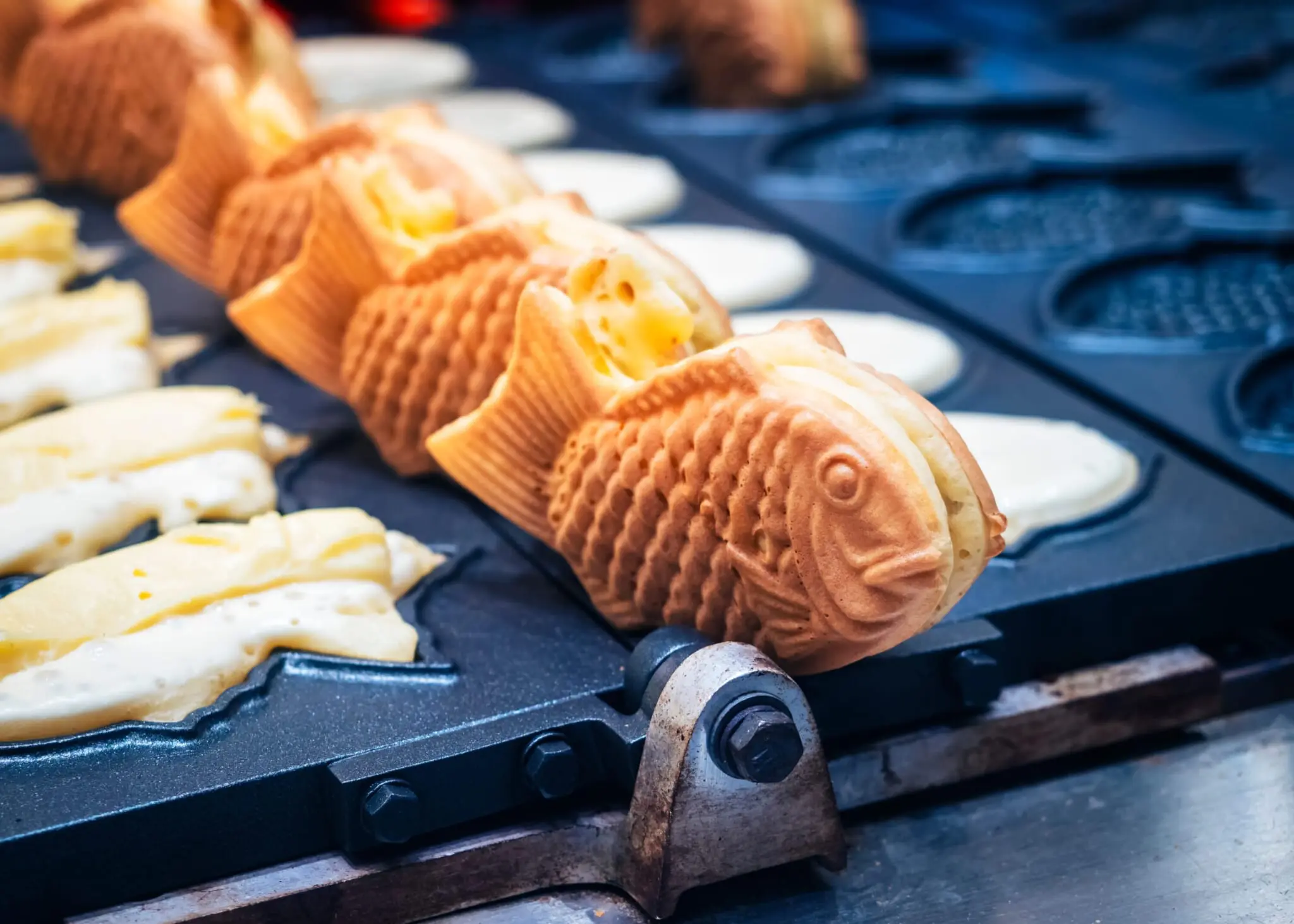
What Is Taiyaki?
Taiyaki is a fish-shaped cake most often filled with azuki (red bean paste), sometimes written as adzuki. Its name translates to “baked sea bream,” as the snack mimics the appearance of tai fish. Taiyaki can be found all over Japan in street stands, festivals and shopping arcades, attracting strollers of all ages to the delicious aroma.
For those who want to recreate them at home, the ingredients are also very accessible: flour, baking powder, egg, milk, sugar and whatever your desired filling is. Although they are usually flavored with sweet fillings like azuki, custard or chocolate, there are some savory versions as well.
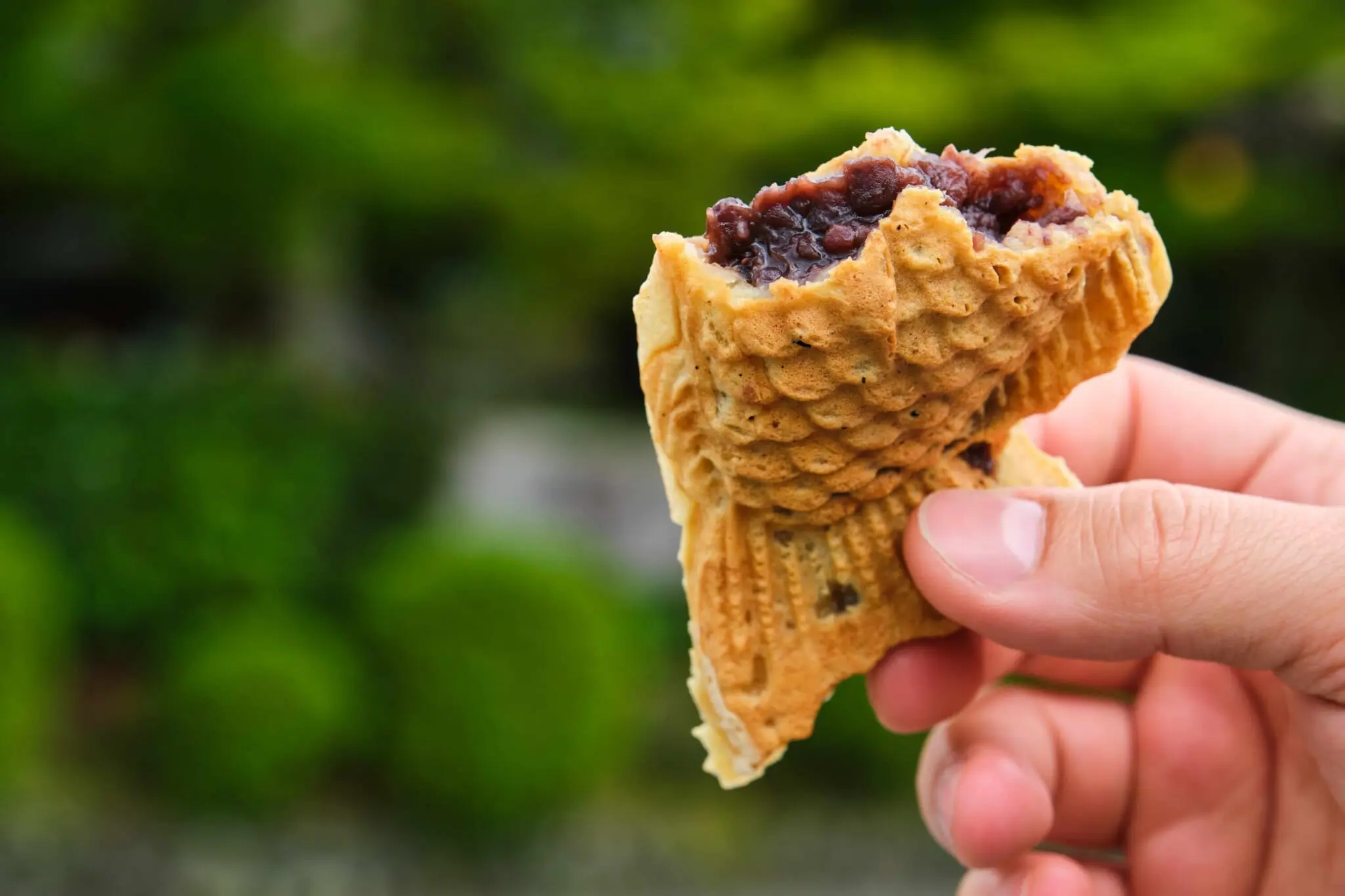
Head or Tail
Due to the prevalence of taiyaki over the years, there is an ongoing debate among Japanese people about whether one should eat the fish head-first or tail-first. There is no definitive answer, but it is often said that people who first bite into the head are optimistic and carefree, while those who begin with the tail are anxious, cautious and sensitive.
Bungeoppang: Korean Carp Bread
Many are also familiar with the Korean version of taiyaki, named bungeoppang (carp bread). Introduced to the country during the Japanese colonial period in the 1930s, bungeoppang gained popularity in the 1960s as it was one of the only affordable snacks to produce and buy. Like taiyaki’s presence in Japan, bungeoppang remains a hallmark of Korean winters.
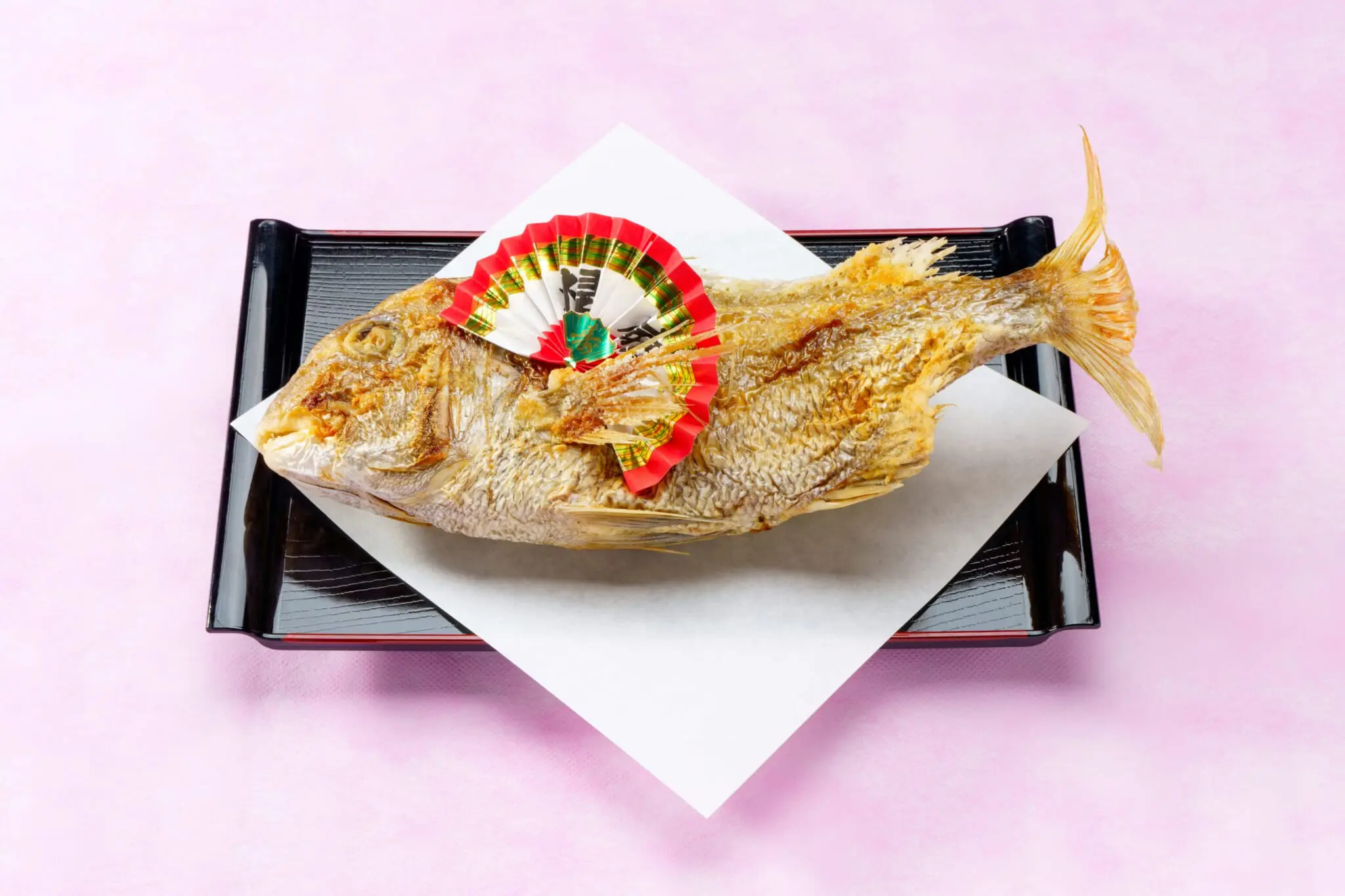
Taiyaki in Japanese Culture
So why is taiyaki shaped like a sea bream? For one, tai fish is a symbol of good fortune and prosperity in Japan. The fish often emerges in Japanese mythology and folklore as an icon of determination. It is also regularly used as the yakimono (grilled dish) portion of osechi (Japanese traditional New Year’s cuisine) for luck.
Taiyaki, as the crispy yet fluffy interpretation of this auspicious fish, is a huge source of comfort for the people of Japan. Regardless of the increasingly ephemeral food trends that come and go each year, the appeal of taiyaki remains the same: it’s familiar, simple and affordable. Most importantly, it’s a wholesome reminder to appreciate the small, spontaneous joys in life with your friends and loved ones.
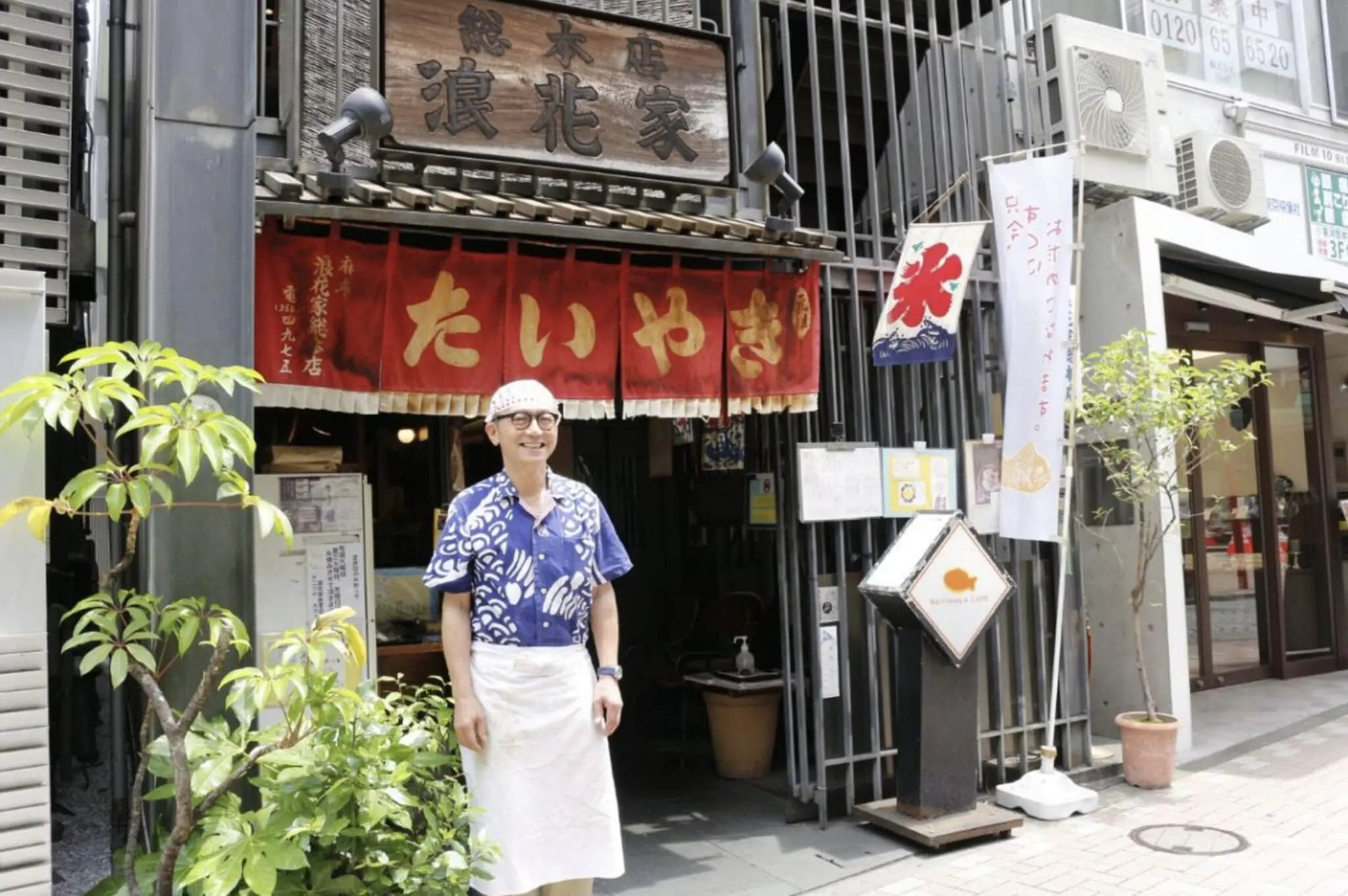
Naniwaya Sohonten Azabujuban, courtesy of Tokyo Shimbun
Where It All Began: Naniwaya Sohonten
The beloved treat came to life with a humble mission in mind: providing a small source of happiness for the neighborhood. Taiyaki was invented in Japan’s Meiji period by Seijiro Kobe, the first owner of the taiyaki specialty shop Naniwaya Sohonten. Born in Osaka, he relocated to Tokyo to attend university and opened an imagawayaki shop with his brother in 1909.
Imagawayaki, a thick round pancake filled with red bean paste, was a widely-known snack at the time. Kobe attempted to recreate the pancakes in different shapes, such as turtles and airships, but the shop had zero luck selling them. He then decided to make fish-shaped molds instead.
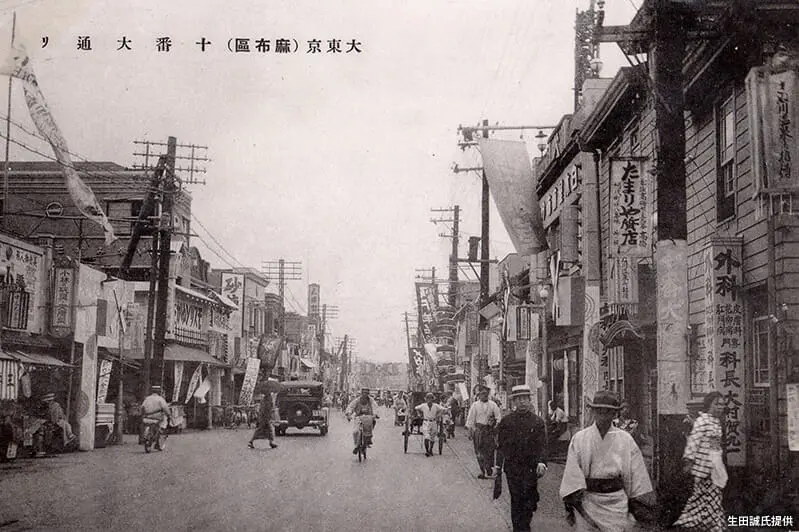
azabu-juban boulevard in the early showa period, courtesy of makoto ikuta
The Shape of Luxury
In the early 1900s, sea bream was an expensive delicacy that working-class people could afford only for special occasions. By reinterpreting this meaningful luxury as an accessible dessert, Kobe allowed ordinary people to infuse their days with a touch of festivity and a dash of good fortune.
Sales skyrocketed, and the rest is history; Naniwaya Sohonten was established in Tokyo’s Azabu Juban neighborhood in 1948, and remains popular to this day. Around 150 stores have been opened throughout Tokyo since then.
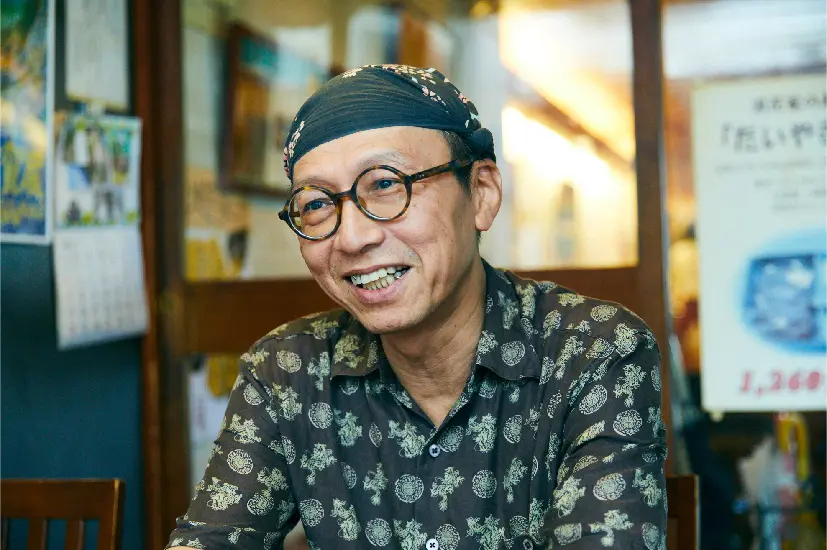
Naniwaya Sohonten owner Masamori kobe, courtesy of azabujuban shotengai
The Evolution and Modern Identity of Taiyaki
Unexpected Musical Ties
In 1975, Naniwaya Sohonten’s taiyaki reached new heights of fame with the hit children’s song “Oyoge! Taiyaki-kun” (Swim on! Taiyaki-kun). Singer Masato Shimon mentions “the old man storekeeper” in the track, referring to Naniwaya’s third-generation owner, Morikazu Kobe. It was Japan’s best-selling single of the 1970s.
Kobe’s son Masamori, who is the current owner of Naniwaya, remarked during a conversation with Shun Gate that taiyaki now enjoys international acclaim. Apparently, the members of Aerosmith were so enamored with the snack that they requested Naniwaya’s Osaka branch to bake them fresh at the concert venue.
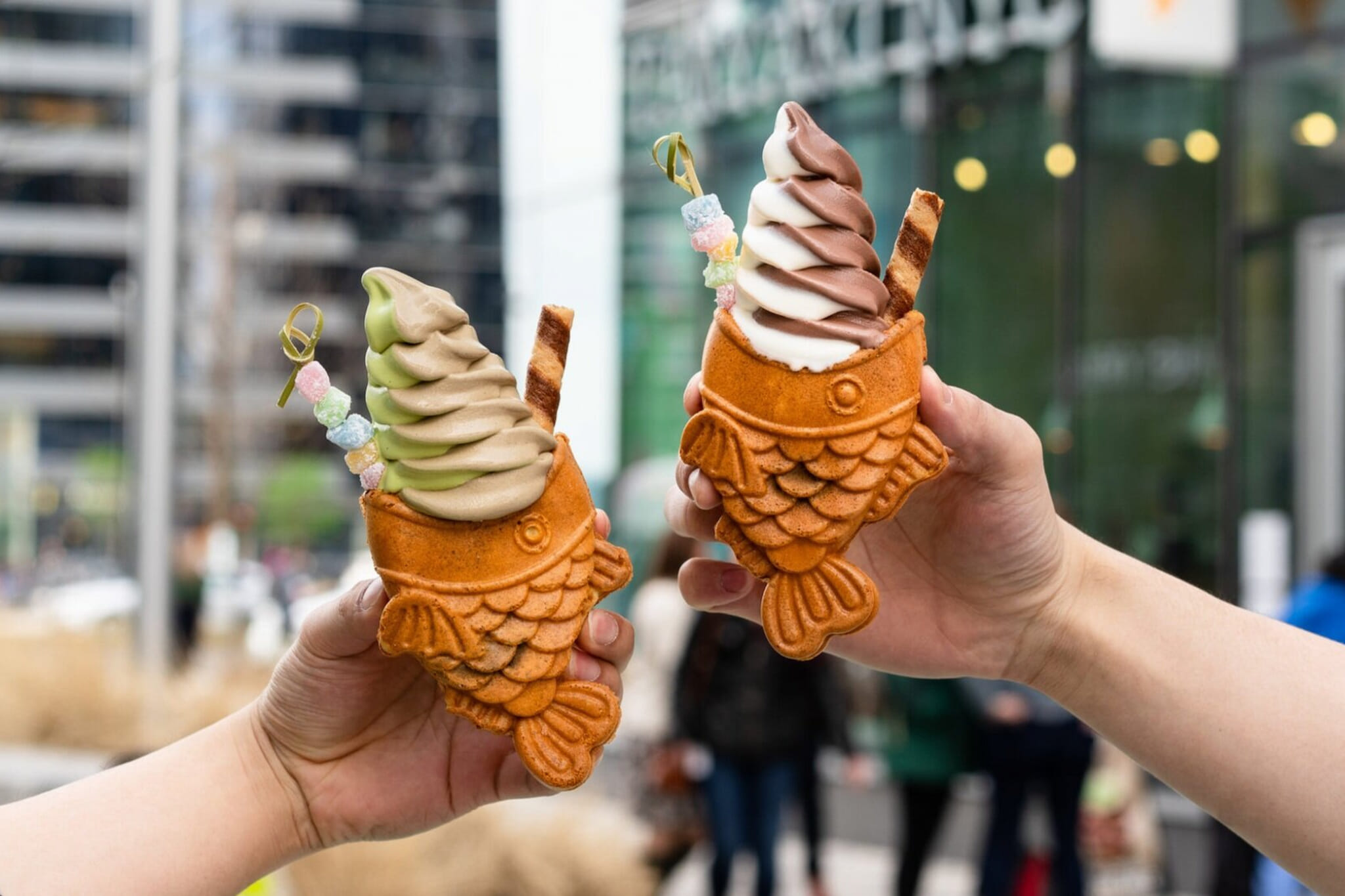
Courtesy of Taiyaki Nyc
Instagram Fame and Beyond
In 2016, Taiyaki NYC took New York by storm with its taiyaki-cone soft serves. Although serving cold ice cream into a warm pancake cone was somewhat impractical, the dessert’s cosmopolitan success confirmed that the allure of taiyaki transcends time and space.
Today, companies continue to create modern interpretations of taiyaki, experimenting with assorted recipes. At the same time, the longstanding original maintains its modest roots and uncomplicated charms.



